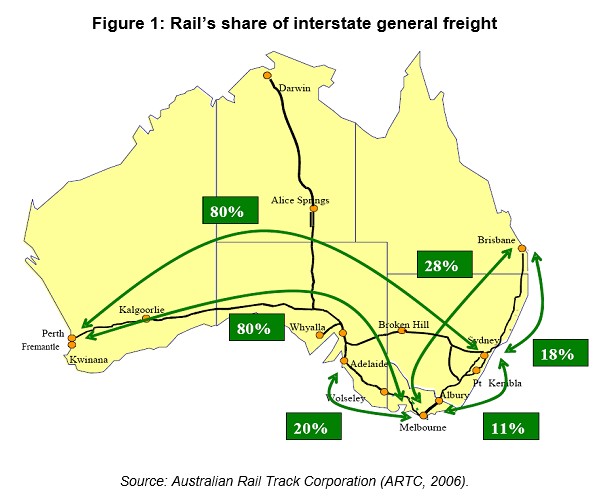Former infrastructure and transport minister, Anthony Albanese, continues to push hard for a High Speed Rail (HSR) linking the East Coast capitals. From The Canberra Times:
Our nation should… invest in the proposed high-speed rail link from Brisbane to Melbourne via Sydney and Canberra, which would turbocharge economic development in regional Australia. High-speed rail would allow people to move between capitals in as little as three hours. It would slash the journey between Sydney and Canberra to 40 minutes, quicker than it takes to travel from Sydney’s suburbs to its CBD.
Delivering this project would provide new options for companies to base their operations in Canberra, reducing their costs and providing more jobs in the nation’s capital.
But that’s just Canberra. High-speed rail would be an economic game changer for all communities along its path, including the Gold Coast, Casino, Grafton, Coffs Harbour, Port Macquarie, Taree, Newcastle, the Central Coast, Wagga Wagga, the Southern Highlands, Albury-Wodonga and Shepparton.
It was this potential that was behind the former Labor government’s 2013 decision to allocate $50 million to a high-speed rail authority to advance planning and begin to secure the corridor.
I have explained many times (e.g. here and here) the reasons why I do not support the HSR proposal, namely:
- The exorbitant cost associated with building and operating the rail line;
- Lack of population density to support the project;
- Lack of competitiveness against air travel unless there are massive ongoing operational subsidies from taxpayers; and
- Equity issues if taxpayer funding is used: why should residents of WA, SA, NT, TAS or anywhere else not located along the route fork-out huge taxpayer subsidies for what will in all likelihood be an infrastructure white elephant?
In relation to the specific points raised by Anthony Albanese above, how does he expect that HSR “would allow people to move between capitals in as little as three hours” when it would need to make heaps of stops along its route, including to towns like “Gold Coast, Casino, Grafton, Coffs Harbour, Port Macquarie, Taree, Newcastle, the Central Coast, Wagga Wagga, the Southern Highlands, Albury-Wodonga and Shepparton”?
Indeed, to raise the capital required using value capture (as proposed by CLARA), the train would have to make too many stops – making it a high-speed train that takes way too long.
The other key issue relates to the fare structure. To encourage people to move to regional centres and then commute into the CBD for work would require fares to be kept relatively affordable, which would in turn require heavy subsidies from the government. After all, there’s little point moving from moving from, say, Melbourne to Shepparton, and saving $300,000 on a house, if it costs you $300-plus a week to travel into the Melbourne’s CBD via HSR.
Thankfully, Anthony Albanese did also make a sensible suggestion in supporting an inland rail freight line linking Melbourne and Brisbane:
We also need to achieve progress on the inland rail link between Brisbane and Melbourne, which would expand freight capacity through our nation’s agricultural heartland. Building this project is a no-brainer, which was why the previous Labor federal government invested $600 million upgrading existing track that will form part of the line and allocated $300 million to get the project under way.
But despite the government promising in the 2013 and 2016 election campaigns to fast-track inland rail, not a further sleeper has been laid.
Building an inland rail freight network from Melbourne and Brisbane (including connections to Sydney) has a lot of merit, along with building world class intermodal connections at key locations along the way so transfers between rail and truck are fast and efficient.
Rail is particularly well suited to two types of freight:
- Bulk Freight: rail is suited to the provision of high volume bulk freight services to export facilities because it generally requires well defined point-to-point transport only (such as directly from silo/mine to port) with no requirement for trucking at any intermediate points. Rail can also transport larger volumes in shorter periods to meet shipping requirements and minimise on-port storage.
- Long-haul General (Containerised) Freight: Road has inherent competitive advantages in the transportation of short-haul general freight because of its ability to offer a flexible door to door service without modal transfer (i.e. transfer to/from rail) and its capacity to handle small shipment sizes. However, rail tends to be more price competitive over longer distances where pick-up-and-delivery costs are reduced in unit cost per kilometre terms.
However, despite the long distance between Melbourne and Brisbane, rail’s share of general freight was just 28% in 2006, whereas it was 80% between the East Coast and Perth (see below).

A key reason why rail’s share is so low is because it shares the track with the passenger rail network in Sydney, which has priority. This makes rail freight far slower and less reliable than road transport, despite what should be a strong natural advantage (i.e. the very long distance travelled).
The end result is that thousands of truck trips are taken between Melbourne and Brisbane when, given decent infrastructure, rail could easily be fulfilling the role instead.
Accordingly, road trauma is higher than would otherwise be the case, as are greenhouse gas emissions, given one long freight train could replace around 110 B-Double trucks. Producers are also forced to endure higher costs in delivering their goods to port, thus reducing their competitiveness.
The $11 billion estimated cost of building an inland rail freight line is also a tiny fraction of the circa $100 billion estimated cost of building a HSR passenger network.

